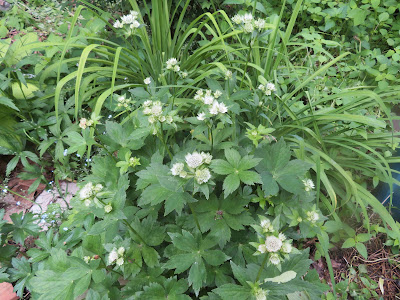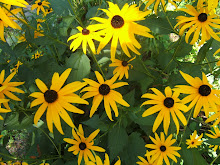A Story
This story is the bookend to the last story, "Attack".
Pause
When I remember the first year of Covid, I think of anxiety, sorrow, death, the world on pause. I remember masked faces, people six feet apart, direction arrows in the stores. I remember people scrambling to figure out work from home, parents overwhelmed as they cared for children while on video meetings. I remember family and friends not able to visit or to travel to get home. So much stress, so much uncertainty, so much pain.
But I will also remember the sky: so breathtakingly clear, so unbelievably blue, so incredibly beautiful. How it filled me with joy and hope.
I really like this frilly pink Oriental poppy. It's so flouncy. I have some regular reddish orange poppies but this poppy is the one I look forward to. Oriental poppies are very hardy and reliable. Mine are in a location that gets spring sun and part-shade for the summer. They like adequate moisture. They will survive with dry conditions but will not bloom very well.
This interesting hosta is Snake Eyes. I bought it from Botanus. I haven't seen another hosta with this kind of leaf markings. I also like the fact that it has decent vigor in its growth habit. I have some other newer hostas that have nice leaves but they hardly get any bigger. I have some old varieties of hostas that get really big but it seems the new varieties are bred for leaf colour and shape but not good growth.
This pretty Knock-out rose has survived for several years in my zone 4 garden. I like the classic rose shape of the blooms. The only downside is it doesn't have any scent. Not prone to blackspot or other diseases. With my winters, there is always some die back so it doesn't get taller than 2-3'. Not super bushy but it is a reliable bloomer and will rebloom later in the summer.
I like the unique flowers of astratia (masterwort). No other flower is quite like them. This pretty white one has pink ends to the flowers as they mature. The flowers are about 1- 1 1/2" wide and grow in clusters.
I had a failed attempt with astrantia several years ago. I think the key is to have a constant level of moisture. They like to be damp but not soggy and definitely not dry. I mulched around this plant with some hard mulch - left over flooring, and it really appreciates the root protection. It is in a part shade location which it likes. It makes a nice big clump without getting out of control. Does not spread by runners.
This red astrantia, which isn't fully open yet, was a pleasant surprise. Two years ago I planted two bareroot plants and only one sent up leaves. However, this spring the other one sprouted and now I have a lovely dark red astrantia. I had a similar thing happen with a bare root giant fleeceflower. It only sprouted the third year but has kept growing nicely since. Don't give up on your bare root plants.
The lamium, geranium, and euphorbia make an interesting combination. The flowers of the lamium and geranium are exactly the same pink which helps to give the area a cohesive look.



















